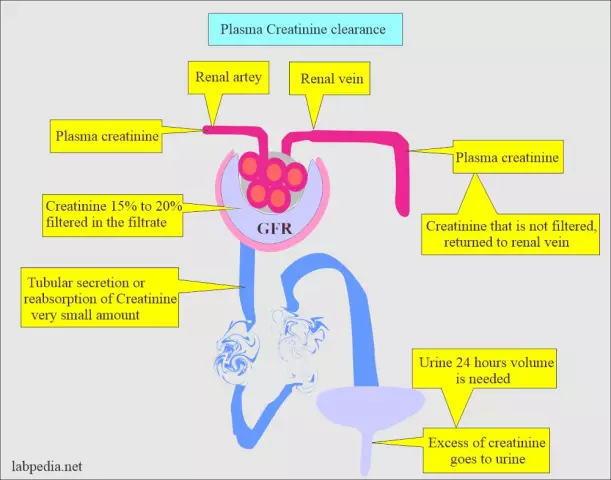- Author Curtis Blomfield [email protected].
- Public 2023-12-16 20:44.
- Last modified 2025-01-23 17:01.
In the general blood test, not the last place is occupied by ESR (modern version - ROE). In the blood, its norm is determined to detect many diseases. This indicator makes it possible to suspect anemia, malignant neoplasms, hepatitis, immunopathology, etc.

ROE: what is it?
The reaction (or rate) of erythrocyte sedimentation - this is how the abbreviation ROE stands for. The specific gravity of red blood cells is greater than that of plasma, therefore, under the influence of gravitational forces, the blood is distributed into layers. The lower, darker one should be saturated red, and red blood cells collect in it. The top layer is more transparent and contains mostly plasma. To calculate the reaction, the time unit during which the subsidence occurs (usually 1 hour) is taken into account, as well as the length of the column (measured in mm). To obtain reliable data, it is better to take a blood test in the morning. ESR, the norm of which is exceeded, may indicate an increase in the specific gravity of erythrocytes due to their rapid gluing. And this indicates a disease.
NormaROE
As noted by doctors, women and men have significantly different ESR in the blood. The norm for males is 2-8 mm in one hour. With age, this figure may change, after 60 years it can reach 15 mm. For women, the norm is an increase in the reaction to 15 mm per hour in adulthood and up to 20 mm in old age. You can not do without this indicator when diagnosing children. 2-12 mm per hour - this should be the case in children with ESR in the blood. The norm for newborns is usually several times less, it is 0-2 mm per hour. But do not panic if this figure is slightly increased. ESR fluctuates frequently in children. The main value in assessing a blood test is the ratio of this indicator to the total number of erythrocytes, lymphocytes.

Rate increase
Increased ESR in the blood is usually observed in inflammatory diseases caused by fungi or viruses. The thing is that when “opponents” enter the body, “defenders” immediately begin to appear - globulins (large protein particles). The stronger the inflammatory process, the more such antibodies, therefore, the ratio of proteins in plasma is greater. That is why with tonsillitis, pneumonia, tuberculosis, arthritis, syphilis, etc. response is always high. Another reason for the increase in the indicator is the appearance of diseases that provoke an increase in red blood cells. It could be erythremia or erythrocythemia. In addition, an increase in the rate of the indicator can also occur with such diseases:
- anemia;
- myocardial infarction;
- tumors;
- sepsis;
- leukemia;
- autoimmune diseases.
Also, an increase in ESR is possible with intoxication, frequent blood transfusions, diseases of the endocrine system, during pregnancy and during menstruation, after taking certain medications (for example, after the drug "Aspirin").

Reduce ESR
There are situations when the ESR in the blood decreases. The norm is violated downwards in the case of:
- increase in blood viscosity;
- pregnancy;
- changing the shape of red blood cells;
- lower blood pH;
- revealing more bile pigments;
- use of certain drugs that lower the rate (mercury-based drugs).
ROE in conjunction with other important indicators of a blood test helps the doctor quickly enough, if not to establish a diagnosis, then at least to suspect a particular disease, and then either prescribe an adequate treatment or refer the patient for additional diagnosis.






